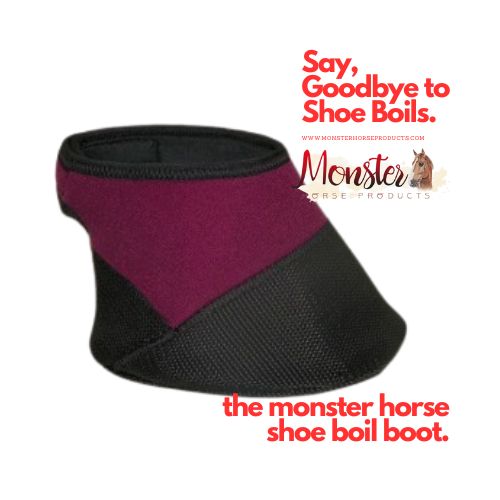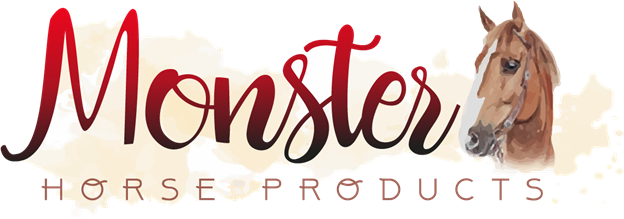Prevent Shoe Boils, Olecranon Bursitis or Capped Elbow in Horses | Shoe Boil Don't Bother Me!
Shoe boils, also known as olecranon bursitis or capped elbow, are a common condition in horses where swelling occurs at the point of the elbow. They are typically caused by repeated trauma, often when a horse lies down on hard surfaces. Treatment options include rest, cold therapy, fluid drainage, corticosteroid injections, or surgery. Prevention is key through protective boots and proper bedding.
What Are Shoe Boils in Horses?
- Shoe boils are soft, fluid-filled swellings over the horse's elbow due to inflammation of the bursa.
Causes of Shoe Boils
- Shoe boils are primarily caused by repeated trauma to the elbow area when lying down, often from horseshoes or hard surfaces.
Early Signs and Symptoms
- Look for swelling at the point of the elbow, heat, and mild lameness.
How Shoe Boils Are Diagnosed
- Veterinarians typically diagnose shoe boils based on a physical examination and history of trauma.
Treatment Options for Shoe Boils
- Common treatments include rest, cold therapy, drainage, corticosteroid injections, or surgical removal if chronic.
Shoe Boil Boots and Rings
- Protective padded devices like shoe boil boots help cushion the elbow and prevent further trauma.
Benefits of Using Shoe Boil Boots
- These boots minimize direct pressure, reduce swelling, and speed up recovery.
Importance of Proper Bedding
- Deep, cushioned bedding helps absorb shock and prevent elbow injuries when the horse lies down.
Fluid Drainage and Corticosteroid Injections
- In cases with large fluid buildup, vets may drain the bursa and inject corticosteroids to reduce inflammation.
When Surgery Is Needed
- Surgical intervention is necessary if the shoe boil becomes chronic, infected, or if fibrosis develops.
Preventing Shoe Boils
- Prevention includes using shoe boil boots, providing soft bedding, and ensuring horseshoes are properly fitted.
Risk Factors for Shoe Boils
- Heavy horses, poor bedding, and ill-fitting horseshoes increase the risk of developing shoe boils.
Recovery Time for Horses with Shoe Boils
- Mild cases resolve within a few weeks, but severe cases may take several months with proper care.
Long-Term Outlook
- With early treatment and good management, most horses recover fully without long-term issues.
Products That Help with Shoe Boils
Top products include:
When to Call the Veterinarian
Call your vet if swelling persists, worsens, or if signs of infection like fever or severe lameness appear.
Understanding and Treating Olecranon Bursitis (Capped Elbow) in Horses
A shoe boil, also known as olecranon bursitis or capped elbow, is more than just a cosmetic blemish — it’s a condition that can become painful, inflamed, or even infected if not addressed properly. Fortunately, with the right treatment, your horse can stay comfortable and healthy.
Let’s break down this common equine issue — what causes it, how to treat it, and most importantly, how to prevent it from bothering your horse in the first place.
What Is a Shoe Boil?
A shoe boil is a soft, fluid-filled swelling that appears on the horse’s elbow. It’s caused by trauma or repeated pressure to the bursa, a small sac filled with lubricating fluid that reduces friction around the elbow joint.
The name comes from the condition's typical cause — the horse's heel or horseshoe striking the elbow while lying down, especially on hard or poorly cushioned surfaces.
🚩 Signs and Symptoms
-
Visible swelling on the point of the elbow
-
Fluid-filled sac or lump
-
Warmth and mild sensitivity (in some cases)
-
Possible infection or discharge (if advanced)
While many shoe boils are painless and considered just a cosmetic issue, larger or infected boils can lead to discomfort, limited movement, or secondary infections.
⚠️ Causes of Shoe Boils
Shoe boils most often occur due to:
-
Lying on hard stall surfaces or uneven ground
-
Improper shoe fit that causes heel-to-elbow contact
-
Lack of adequate bedding in stalls or trailers
-
Thin-skinned or sensitive horses that are prone to elbow trauma

Treatment Options for Shoe Boils in Horses
1. Protect the Elbow from Further Trauma
Preventing more damage is the first step.
-
Shoe Boil Boots:
These specially designed boots wrap around the horse’s pastern and help keep the hoof from striking the elbow when the horse lies down. Our top recommendation is the Monster Shoe Boil Boot for daily use and turnout. -
Padding the Elbow:
Applying soft cotton padding or wraps can cushion the area and prevent direct impact during rest or transport.
2. Reduce Inflammation and Swelling
-
Anti-inflammatory Medications:
Your vet might recommend phenylbutazone (Bute) or flunixin meglumine (Banamine)</
